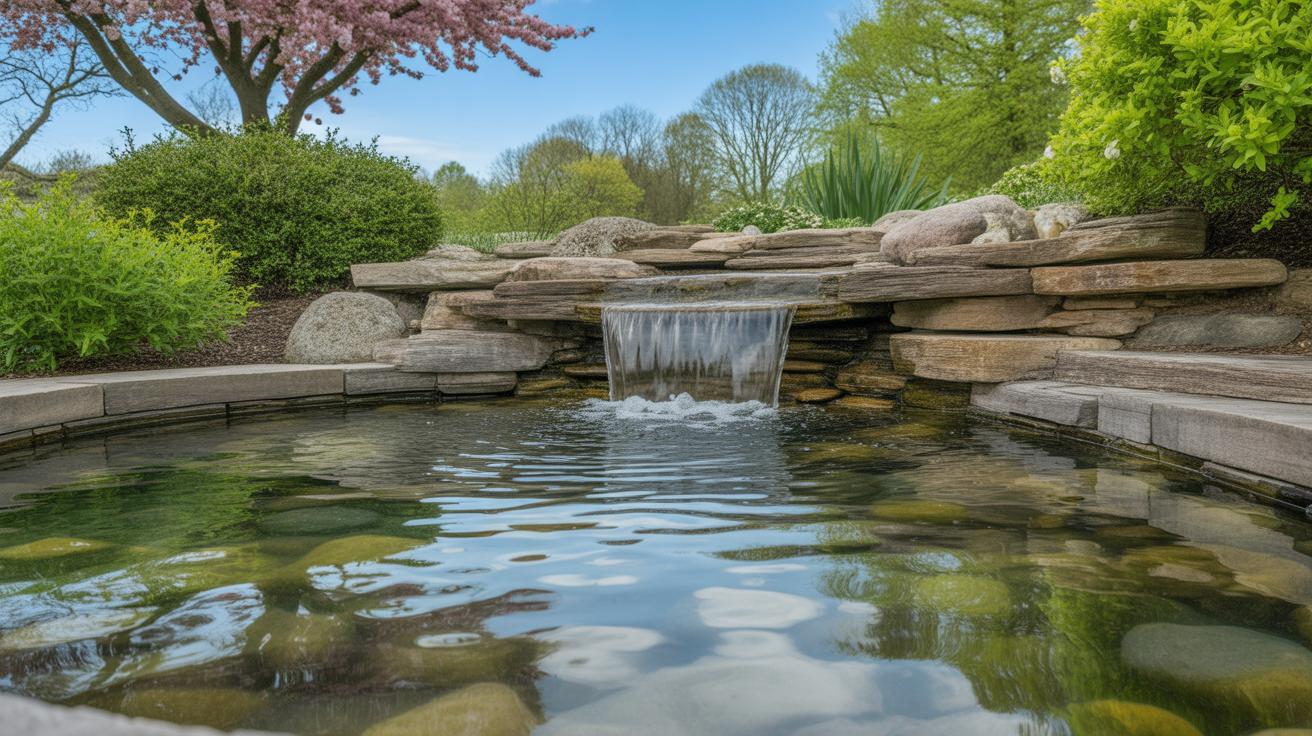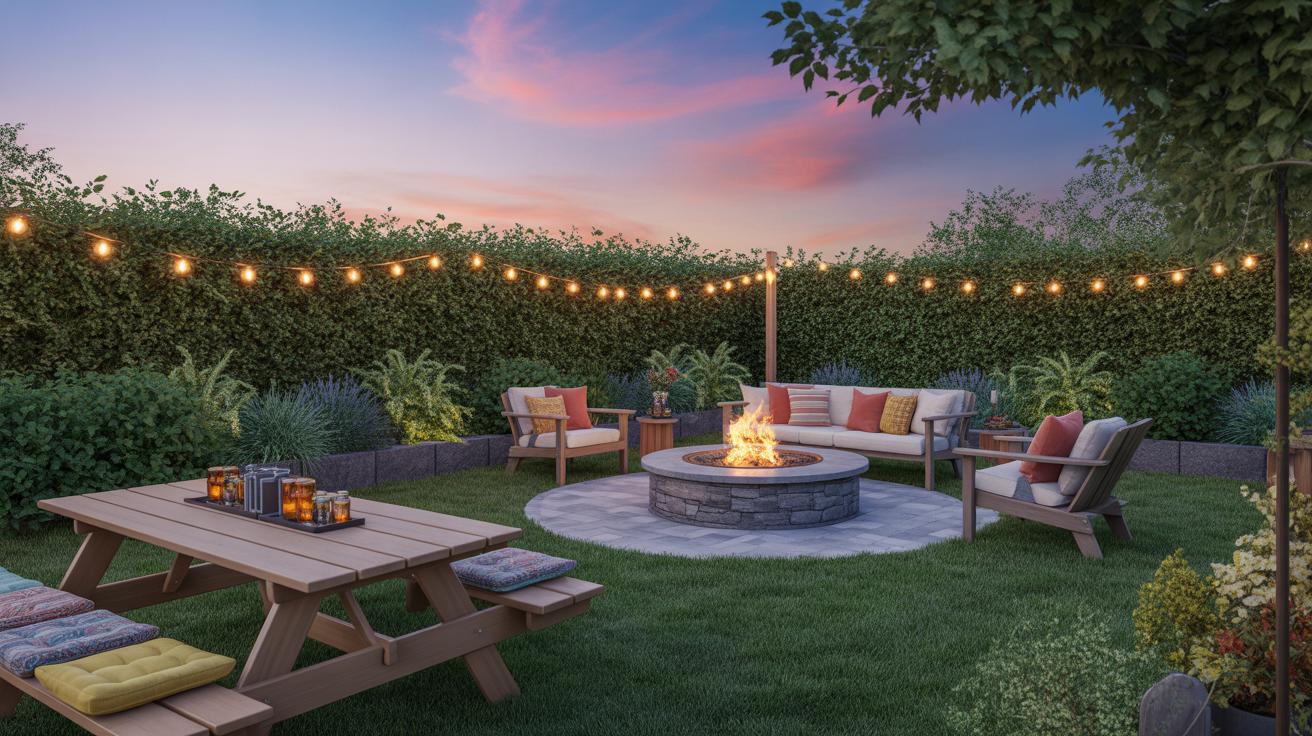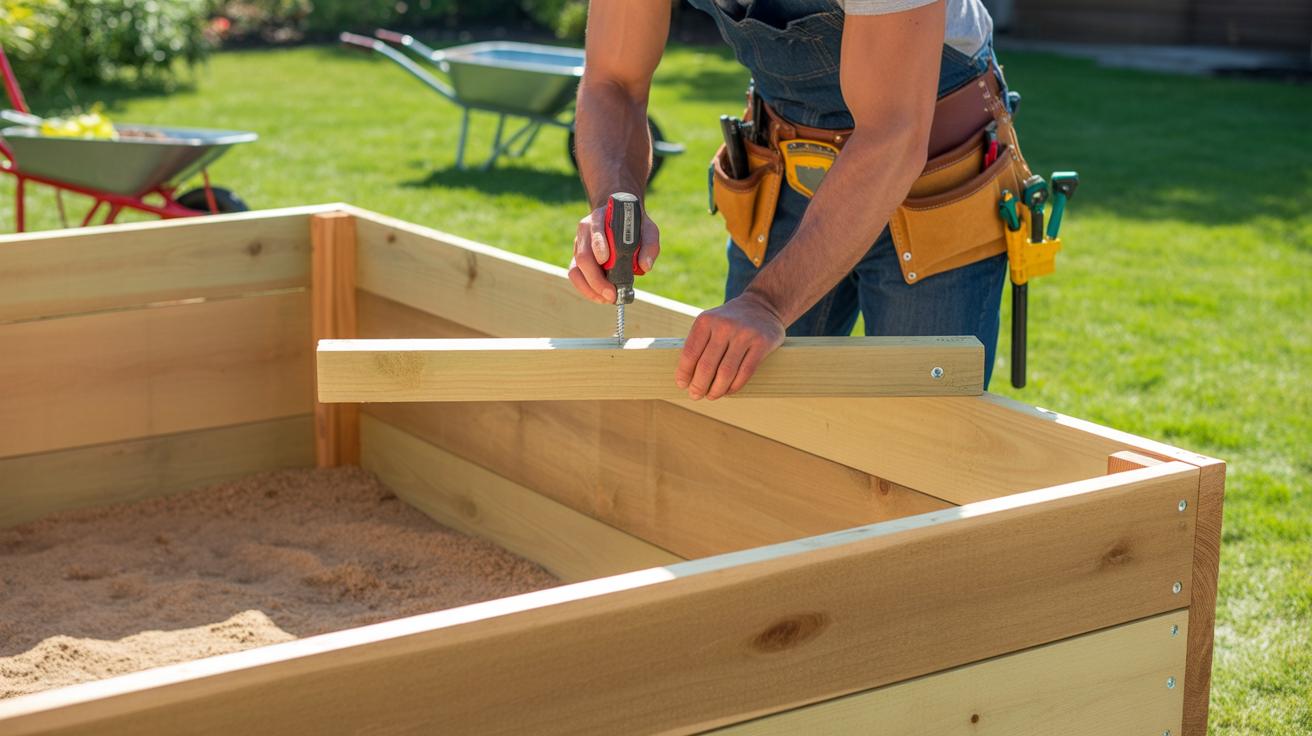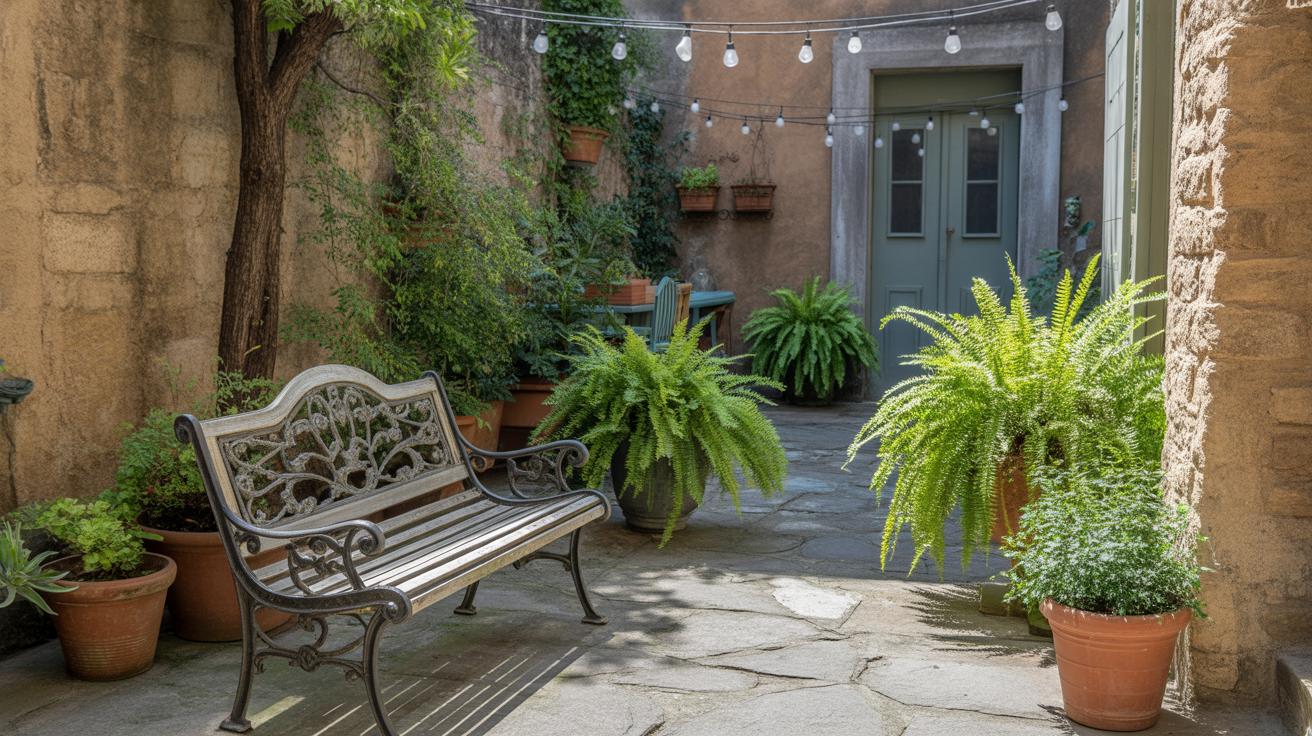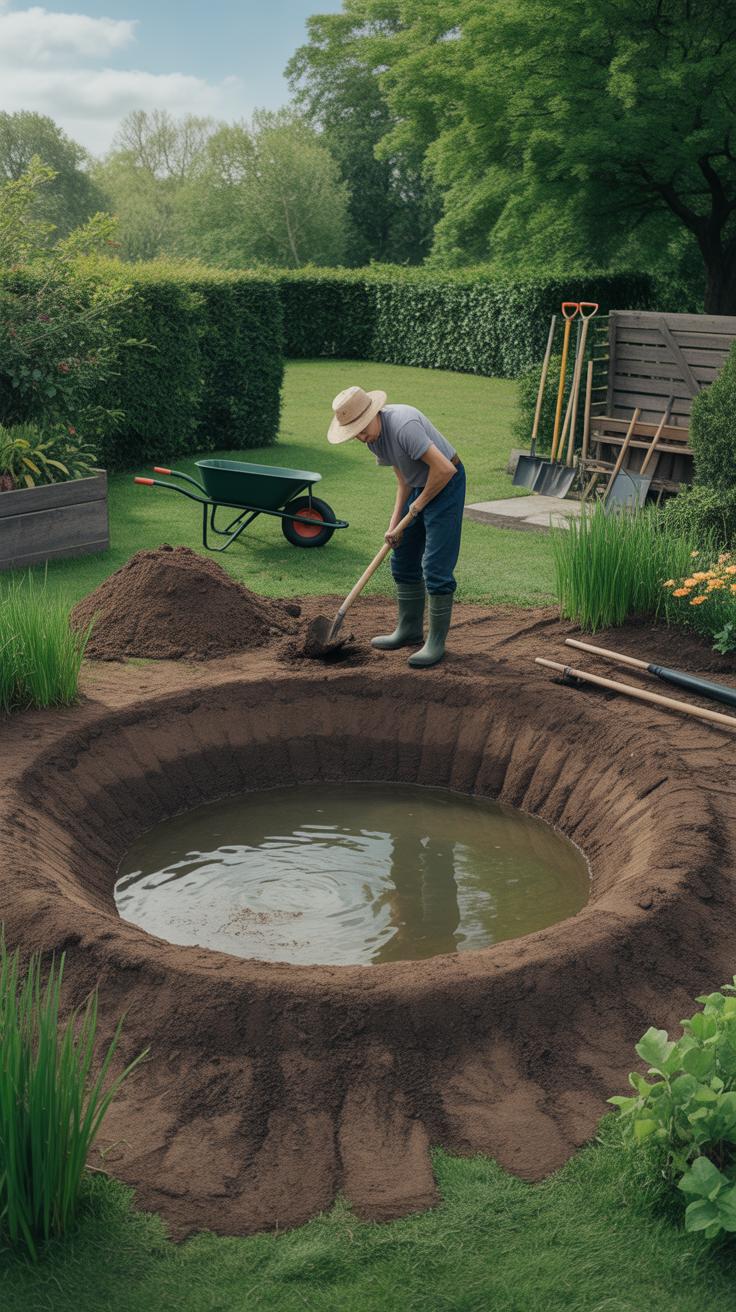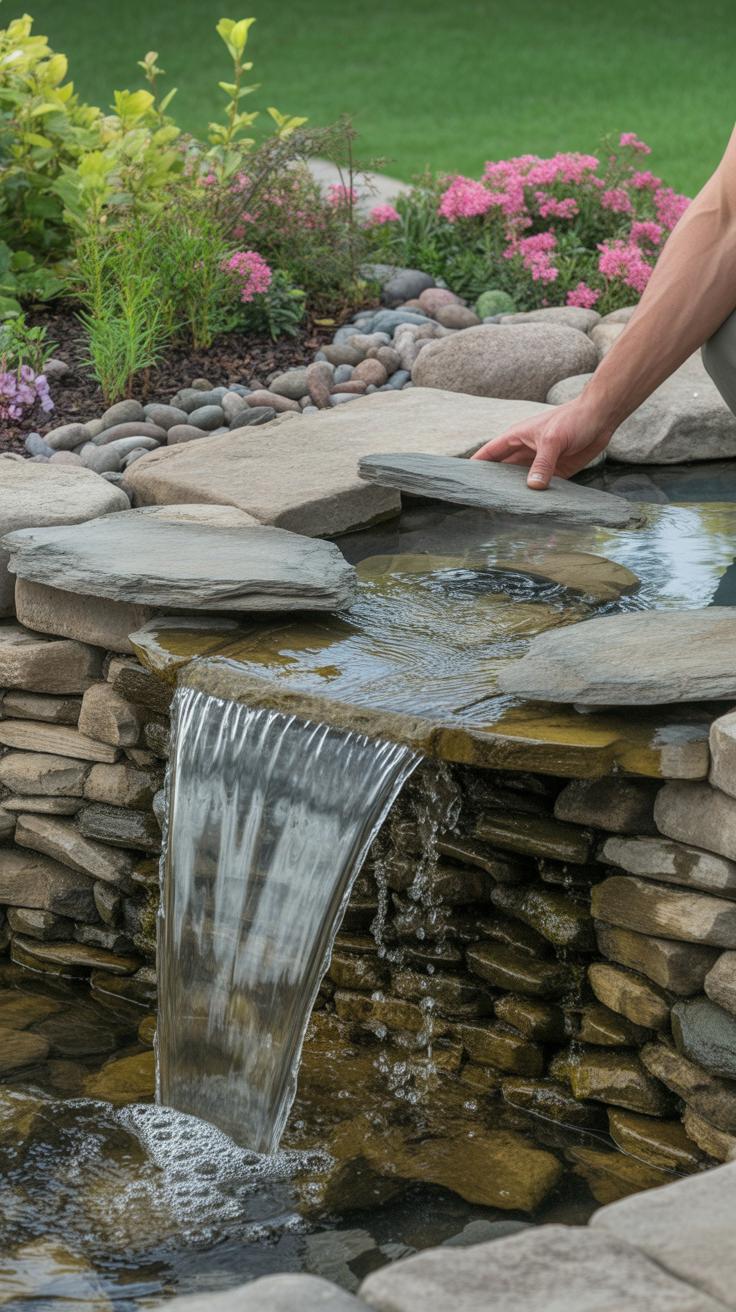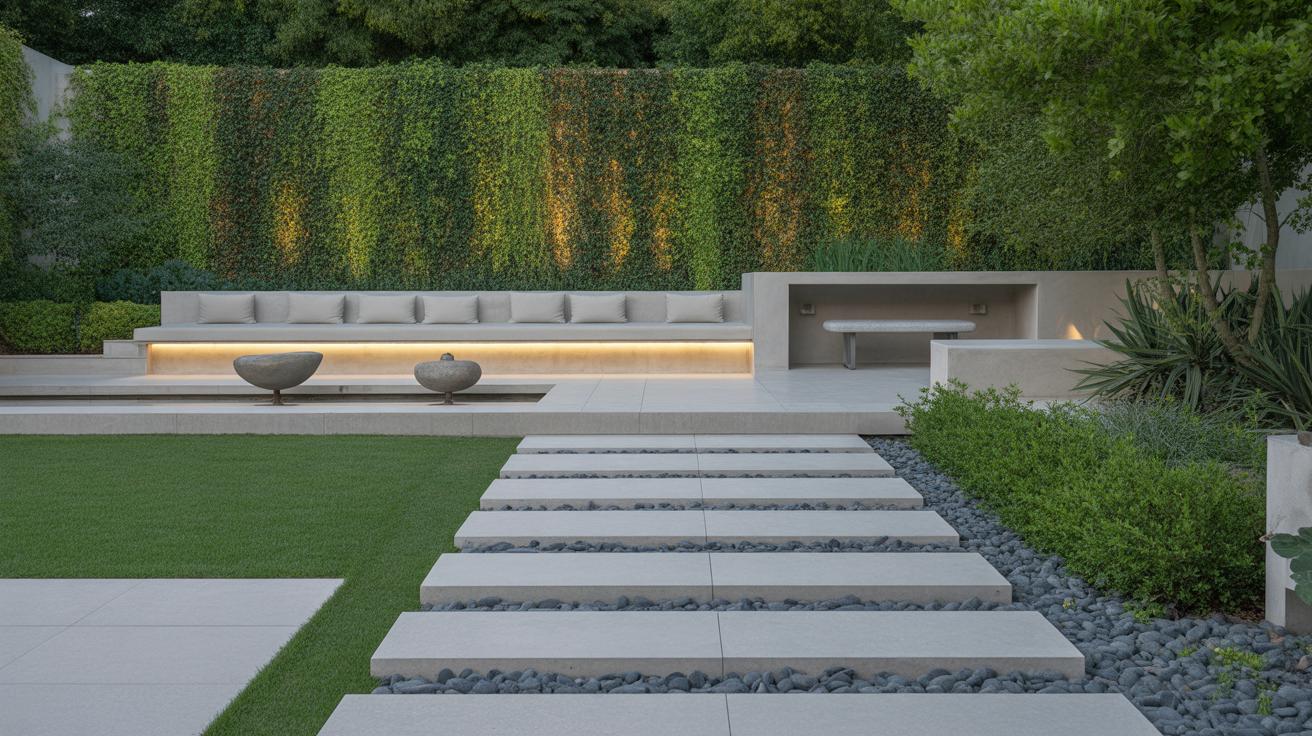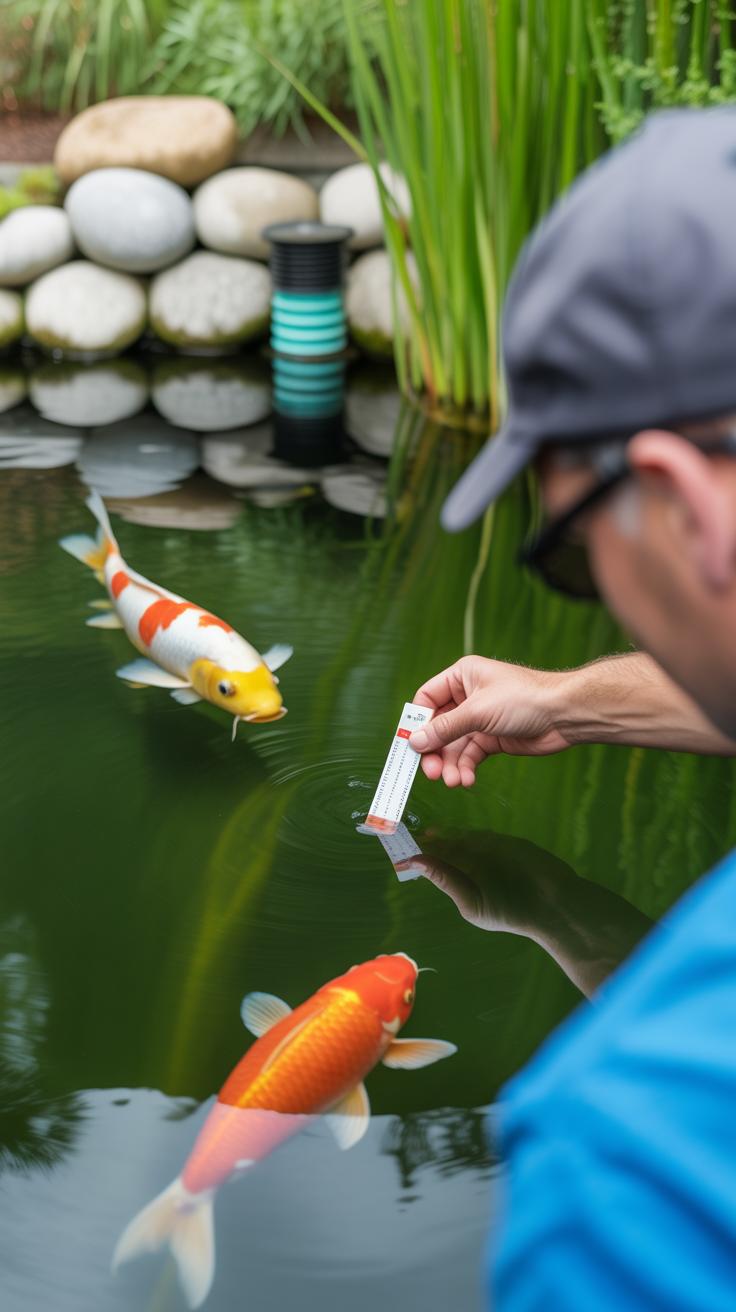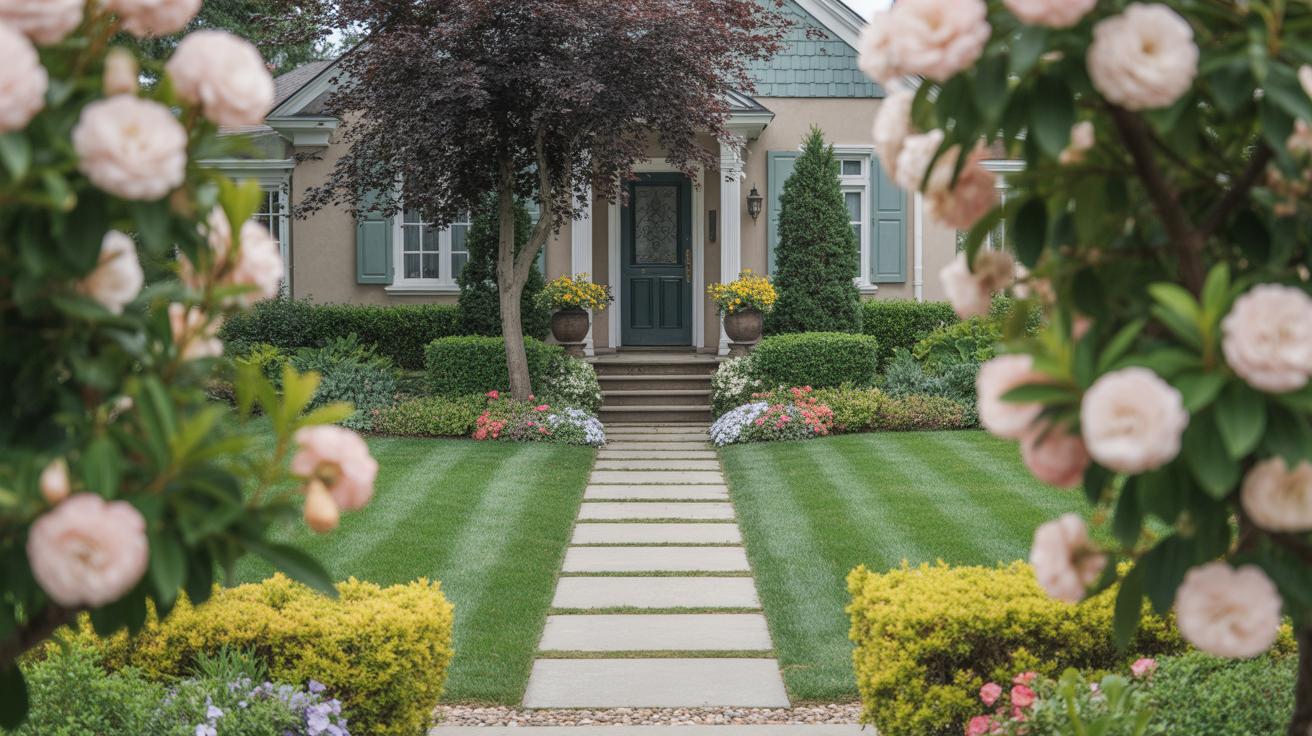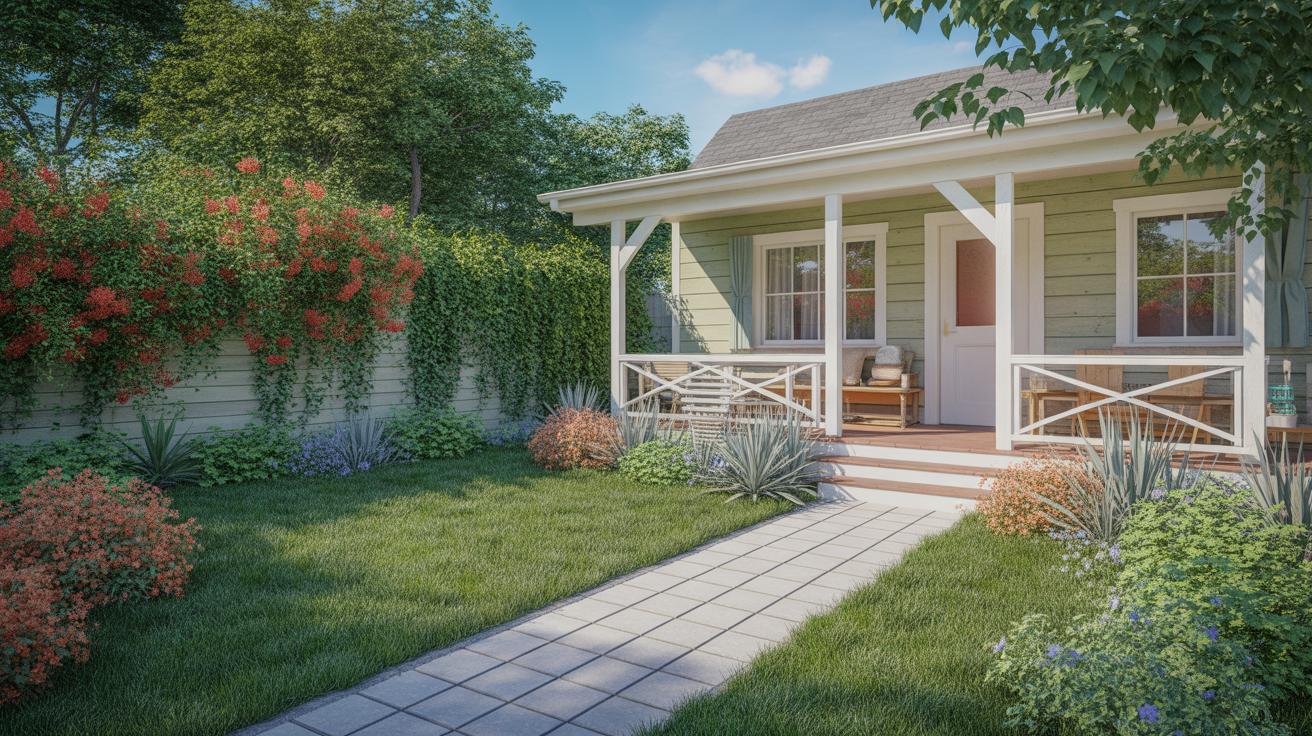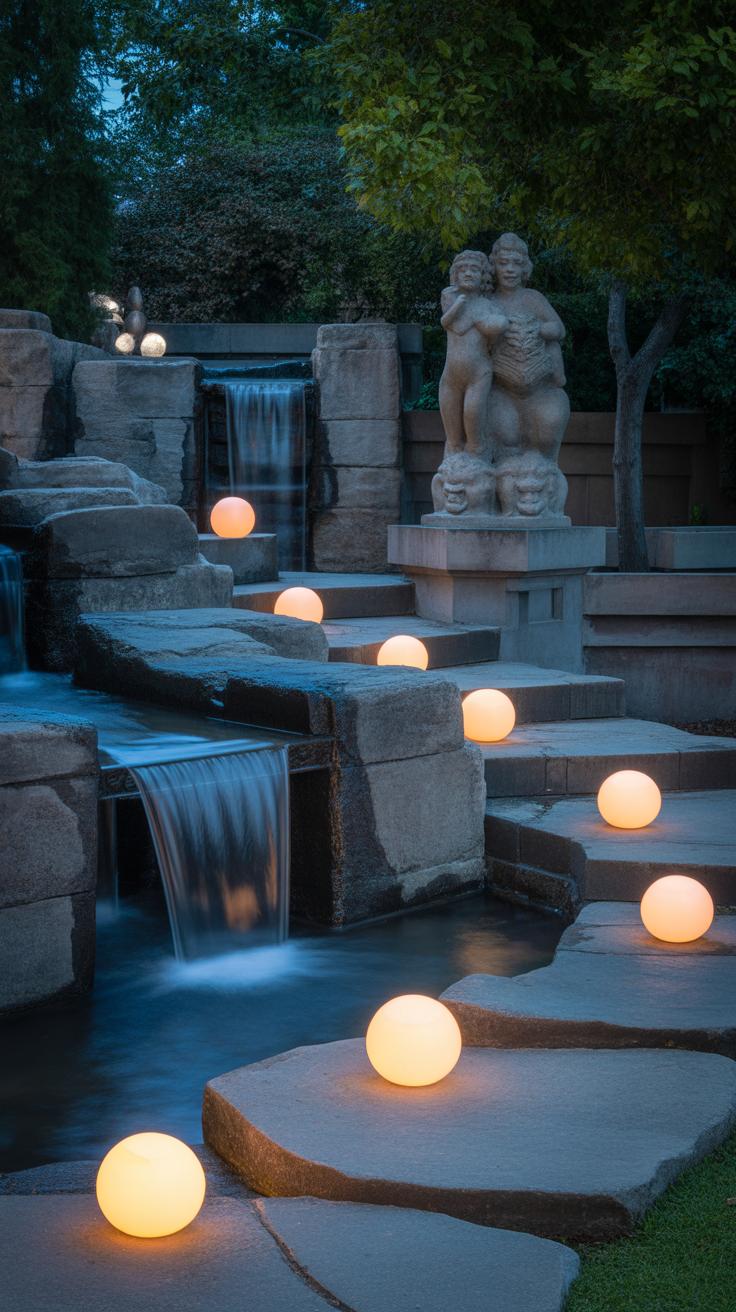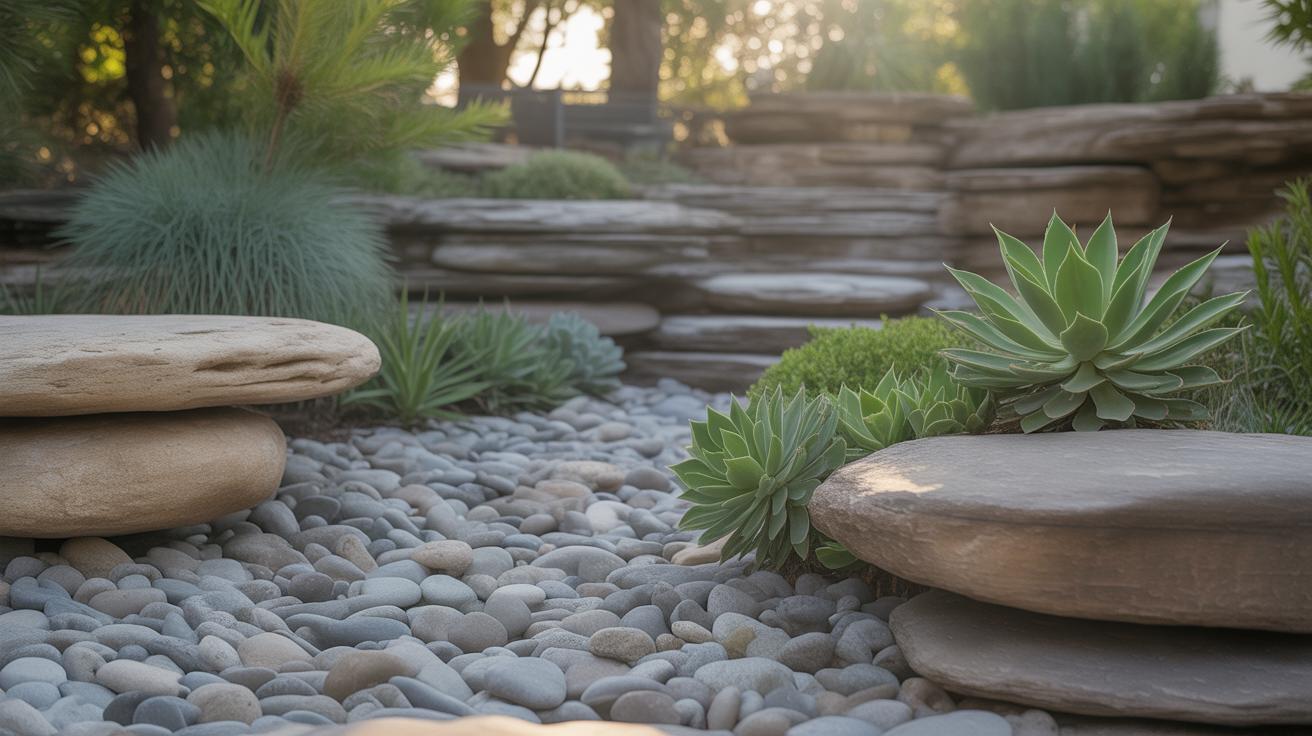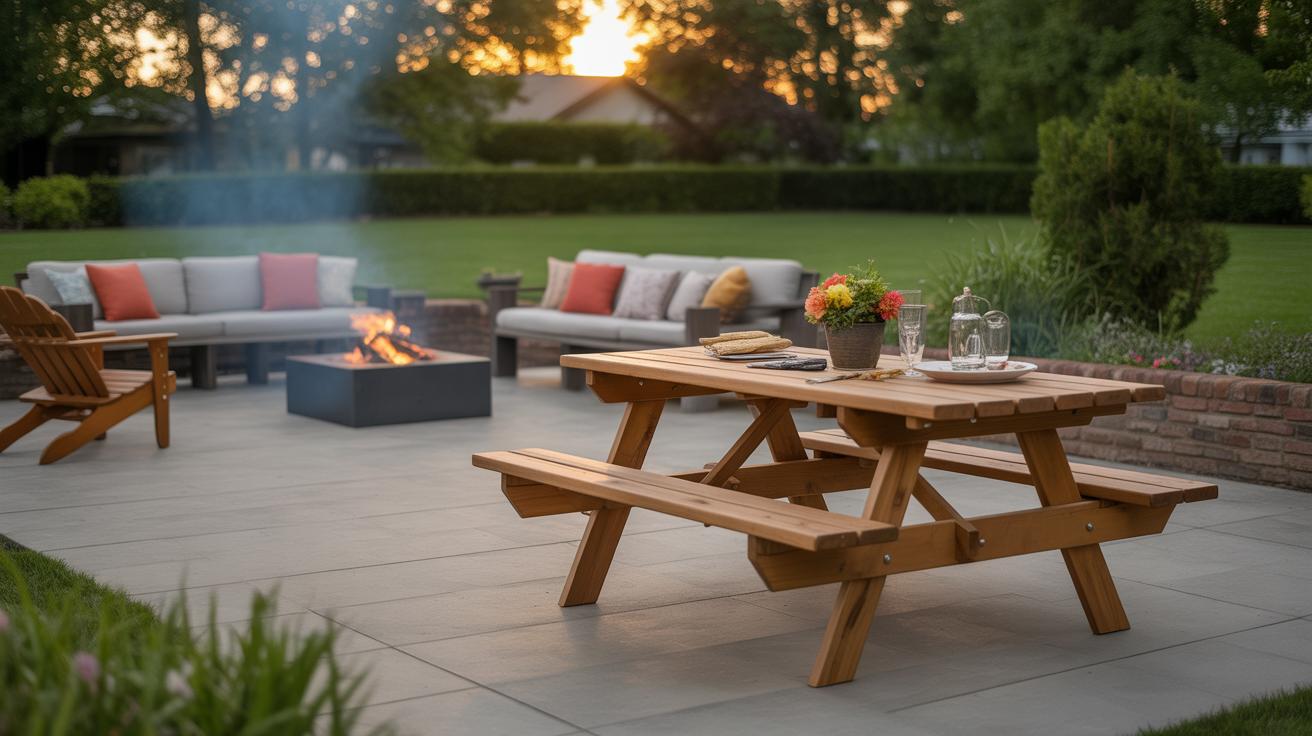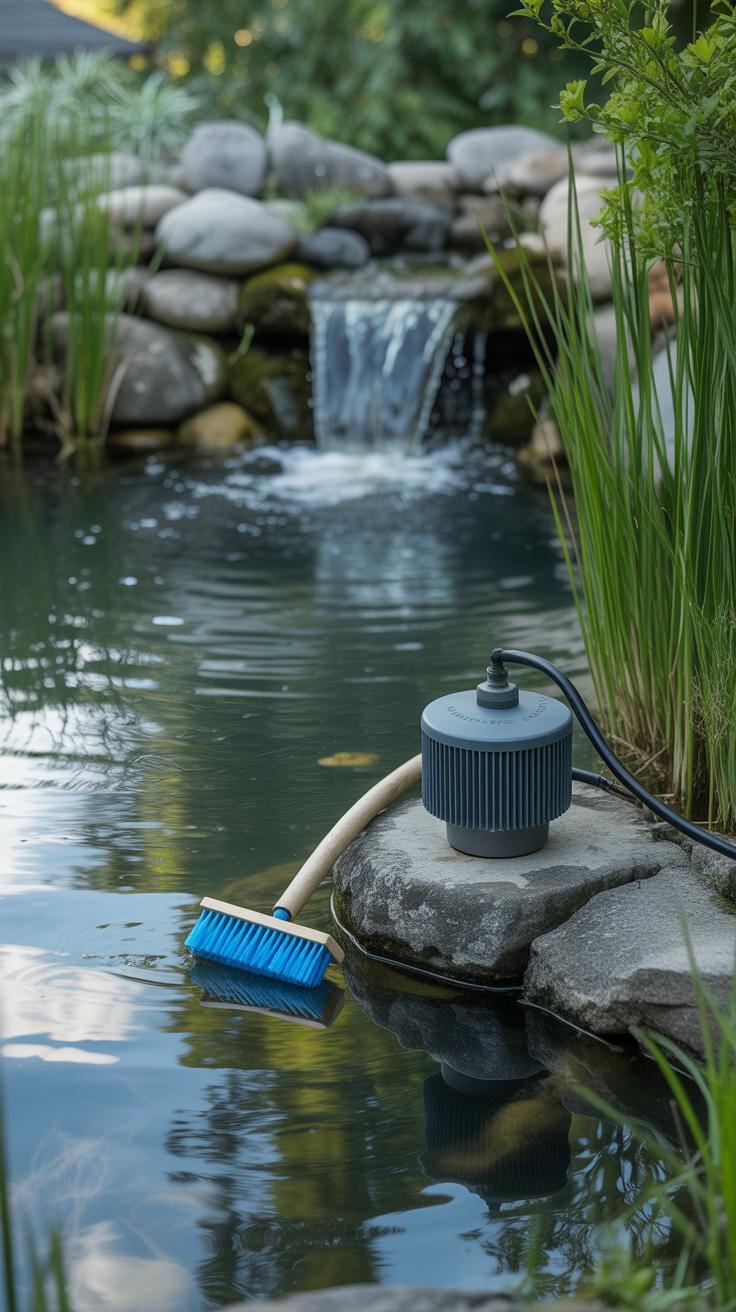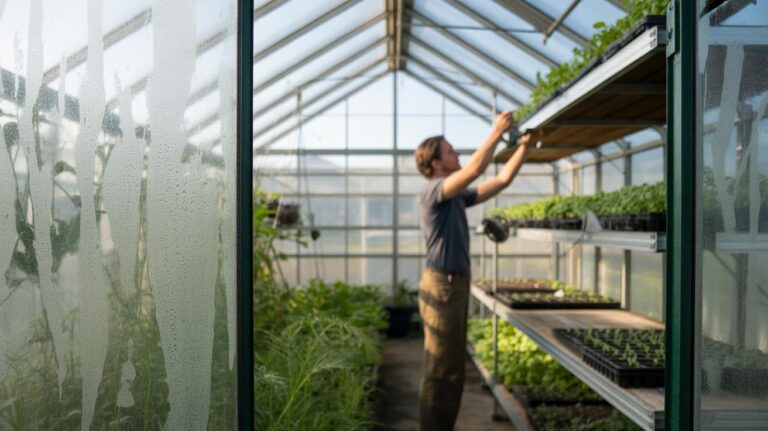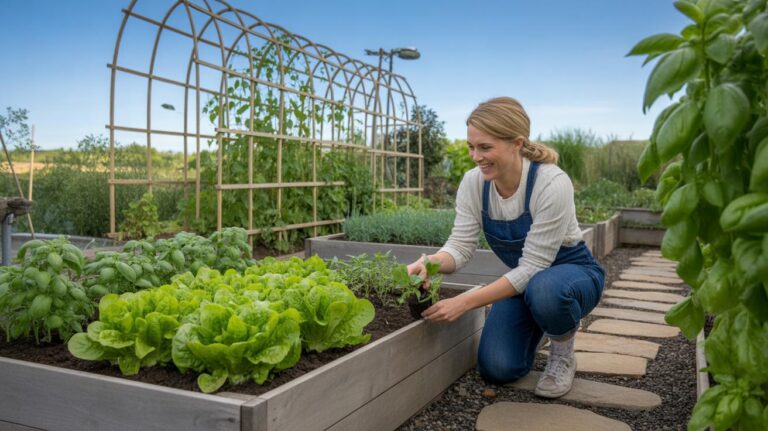Introduction
Water features can add beauty and calm to your garden. DIY pond and waterfall ideas for your garden are great ways to make your outdoor space more inviting. With the right steps, you can build a pond or waterfall yourself without needing professional help. This guide explores practical tips that will help you create your own stunning water features.
From basic pond construction to adding waterfalls, you’ll learn how to bring water to your garden for a peaceful environment. Water features create habitats for wildlife and add gentle sounds of flowing water. These ideas can improve your garden’s look and feel, making it a perfect spot for relaxation or fun family activities.
Understanding Water Features for Your Garden
What Are Water Features?
Water features are elements in a garden or outdoor space that incorporate moving or still water. They can range from small fountains to large ponds or waterfalls. While their main role is to bring water into the garden visually and audibly, they often serve other purposes, too. The use of water in gardens dates back centuries, with ancient civilizations like the Romans and Persians crafting elaborate water systems for both practical and aesthetic reasons.
Water features are not just about decoration. They can influence the microclimate, offer soothing sounds, and create a sense of calm. You might find that a simple trickling fountain can make you pause and breathe differently in your backyard, even if you hadn’t expected it to. Some people don’t realize how much water shapes their experience of a garden until they actually have one.
Types of Water Features
Here are the common types you might consider when designing your outdoor space:
- Fountains: These come in many styles and sizes, from wall-mounted to freestanding. They provide movement and sound without taking up much room.
- Ponds: More permanent water bodies that can support plants, fish, and other wildlife. They bring a natural, sometimes wild feel to the space.
- Waterfalls: Cascading water adds dynamic presence. Even a small waterfall can be surprisingly effective at creating a focal point.
- Streams: These mimic natural flowing water and can connect features like ponds and waterfalls, creating a layered landscape.
Each type has its own charm and challenges. For example, ponds often require ongoing maintenance, but they also attract birds and frogs, which you might enjoy watching. Fountains are easier to manage but might not offer the same wildlife benefits.
Benefits of Adding Water Features
Water features do more than catch the eye. They can increase your property’s value—buyers often appreciate a thoughtfully designed outdoor space. Plus, the gentle sound of moving water can mask urban noise, helping you feel more relaxed. If you’ve ever sat near a fountain or a small waterfall and just felt calmer, you’re not alone.
These features also create habitats for birds, insects, and amphibians, supporting local ecosystems. You may find yourself more connected with nature just by installing a pond or stream. On the flip side, they require some upkeep and planning, so not everyone finds them perfect. Still, the benefits can far outweigh the effort, especially when you design the right feature for your specific garden.
Planning Your DIY Garden Pond
Choosing the Right Spot
Picking where to put your pond can feel trickier than it looks. A spot with good sunlight usually helps plants and keeps algae in check, but too much sun might heat up the water and encourage unwanted growth. I once placed a pond in a shady corner, thinking it’d be more peaceful, but the lack of sunlight slowed down the plant life more than I expected.
Think about how often you’ll want to access the pond. If it’s tucked away too far or surrounded by dense planting, maintenance becomes a chore you might postpone. Near a patio or a path can be smart, especially if you’re hoping to enjoy the sights and sounds regularly.
Drainage also matters. You don’t want a spot that floods dramatically after rain or is soggy underfoot. It might be worth observing your garden through a season before deciding. Does the soil stay wet? Does water pool after storms? Those little details can save you trouble later on.
Selecting Pond Materials
Materials can make or break your pond’s overall look, longevity, and function. Pond liners are probably the most crucial—rubber (EPDM) liners are flexible and last a while, but some people opt for PVC liners since they’re cheaper, though less durable. I remember debating this for days.
Stones and rocks tend to add a natural vibe and help hide liner edges. Cobblestones, slate, or river rocks all work but differ in weight and price. Sometimes a mix looks best, even if it feels a bit random. Just make sure the stones are stable and won’t shift out of place.
Then, there’s the pump. Choosing the right pump depends on your pond size and whether you want a waterfall or fountain effect. Pumps are measured by how much water they can move per hour. Too weak, and the water stagnates; too strong, and you might stress your fish or plants. A good rule? Match the pump to circulate the pond volume roughly every two hours.
Plan carefully, but allow some room to adjust. Your first choice might not be the best after seeing things in action, and that’s okay.
Building Your Garden Pond StepbyStep
Digging and Shaping the Pond
Start by marking the outline of your pond using a rope or garden hose. This helps you see the shape clearly before digging. When you begin to dig, go slowly and think about layering the depth gradually—shelves or ledges can make planting easier later on. The edges don’t have to be perfectly smooth. In fact, a slightly irregular shape tends to look more natural. Make sure to remove sharp rocks or roots that could puncture the liner later. Keep the excavated soil nearby; you’ll likely use it to shape the surrounding area or build up your waterfall.
Installing Liners and Pumps
Once your hole is ready, lay down an underlay fabric to protect your liner from punctures. Then place the pond liner carefully, folding it into the contours of your excavation. Leave extra material around the edges—it’s easier to trim later than to add more. When the liner looks right, start filling the pond slowly with water to help it settle evenly. Next comes the pump. Position it where water circulation will be best—often near a filter or waterfall spot. Connect the pump tubing securely, and don’t forget to run the cables discreetly to avoid tripping hazards or water damage. The pump’s flow rate will affect the movement of your water; I found starting slow helps you gauge the noise and splash before cranking it up.
Creating a Waterfall for Your Garden Pond
Designing a waterfall to complement your garden pond can totally change the space—making it feel alive without overwhelming it. If you’re thinking about where to place it, consider the natural slope of your yard or a spot that isn’t too far from the pond’s edge. Sometimes, waterfalls tucked into a corner create a quiet retreat, while others placed directly at the pond’s entrance invite more attention.
You might try a cascading rock waterfall for a rugged look, or something more subtle with a smooth stone slab and gentle flow. Each style gives a different mood, and picking the right one depends on your garden’s vibe and size. Wondering what materials you’ll actually need? Start with a pond liner or a preformed basin to catch water at the fall’s base. Use heavy-duty plastic or rubber liners—these hold up better against wear and prevent leaks.
Gather stones or rocks that stack well, but avoid anything too flat or slippery—those can look unnatural or even unsafe. A small submersible pump is crucial; it pushes water from the pond up to the top of the waterfall. Remember to check its flow rate so the cascade doesn’t feel like a trickle or a torrent.
Construction involves building a sturdy frame, usually from bricks or treated wood, to support the rocks and hide plumbing. Lay your liner carefully, shaping it to funnel water back into the pond without splashing excessively. Placing rocks strategically is part of the fun and can take time—try stepping back frequently to see how it looks and sounds. Some waterfalls require a bit of trial and error to get right, so don’t rush.
Maintaining Clean and Healthy Water
Keeping your pond and waterfall water clear can feel like a balancing act, but it doesn’t have to be overly complicated. One of the key players here is the filtration system. You have a few options, each doing its part to remove debris and impurities.
Pond Filtration Systems
Mechanical filters trap leaves, dirt, and other particles floating in the water. Think of them as nets catching unwanted solids. Biological filters go a step further—they host beneficial bacteria that break down harmful ammonia and nitrites, which can build up as fish or organic matter decay. Sometimes, you’ll find combo filters that blend both mechanical and biological stages. UV clarifiers also pop up often; they use ultraviolet light to kill algae spores, helping reduce green water, but they don’t remove debris. Setting up the right mix depends on your pond’s size and wildlife.
Natural Cleaning Methods
Apart from machines, nature offers some handy solutions. Aquatic plants like water lilies, hornwort, or cattails absorb excess nutrients that would otherwise feed algae bloom. They also provide shade to limit sunlight, which algae love. Then, there’s beneficial bacteria you can add—these microscopic workers quietly digest organic waste before it piles up. Sometimes, I find combining plants with bacterial treatments keeps water clearer longer than using filters alone. Don’t overlook regular skimming or partial water changes either; they play their part in maintaining balance over time.
Attracting Wildlife to Your Water Feature
Water features do more than just beautify your garden—they can become a hub for local wildlife. By providing fresh water, you create a small habitat that invites frogs, birds, dragonflies, and other creatures. It’s surprising how quickly nature notices, especially if the water is accessible and safe.
You might wonder how to encourage these visitors without turning your garden into a chaotic wild zone. One approach is to add shallow edges or gently sloping sides so animals can drink and enter easily. Floating plants or lily pads can offer shelter, while rocks or logs near the water give frogs and insects a place to hide.
Creating Wildlife-Friendly Environments
Plants play a huge role here. Native plants nearby, like reeds or sedges, attract insects that birds and bats love to feed on. Small, dense shrubs or a brush pile by the water gives birds spots for nesting and perching. You might even spot a frog or two attracted to native aquatic plants or submerged leaves—these provide eggs with safe places.
It doesn’t take much to support biodiversity. I found that even a modest mixture of broadleaf plants near a pond encourages dragonflies and damselflies to hover, which is quite an enjoyable sight.
Wildlife Benefits for Your Garden
Inviting wildlife has practical perks too. Frogs and birds help control pests, cutting down on mosquitoes or aphids naturally, which means less need for chemicals. Their movements stir the water slightly, keeping it from stagnating too much, which actually benefits your pond’s overall health.
On quieter mornings, just watching the occasional bird visit or hearing frogs croak makes the effort worthwhile. In a way, these creatures bring your garden to life, adding unpredictable, natural beauty. So, isn’t it worth thinking about how to share your outdoor spot with them?
Adding Lighting and Decorative Elements
Types of Garden Lighting
Lighting a water feature at night changes everything—suddenly, your garden feels alive in a different way. But you need to be careful, especially around water.
Low-voltage LED lights are a safe bet. They’re bright enough without overheating and won’t increase your energy bill dramatically. You could place them under water with waterproof casings to highlight the waterfall’s flow or tuck them discreetly around the pond edges for soft glows.
Floating solar lights also add a gentle shimmer, though you might have to adjust them now and then. For a more dramatic effect, try spotlights aimed up from behind rocks or plants. Just avoid anything too harsh—it can spoil the natural vibe you’re aiming for.
String lights near seating areas or lantern-style fixtures on stakes work well too, especially if you want a cozy corner by your water feature. Remember, whatever you choose, electrical safety is key. Outdoor-rated fixtures and proper wiring are not optional.
Decorative Stones and Plants
When it comes to stones, variety is actually a good thing. Mixing smooth river rocks with rougher stones creates texture. Place larger boulders near the waterfall for structure, and scatter smaller pebbles along pathways or the pond edge for detail.
But don’t stop at stones. Plants make a huge difference around water. Marginal plants like cattails or irises soften edges and provide hiding spots for tadpoles or frogs—if that’s something you’re hoping to encourage.
Floating plants like water lilies aren’t just pretty; they help shade the water and reduce algae. Surround the pond with a mix of grasses, ferns, or hostas, depending on how shady or sunny your spot is. You might experiment a bit—some plants thrive better than others, depending on your climate and soil.
Ultimately, combining lighting with natural elements creates a space that feels part garden, part sanctuary. And, honestly, it might even invite you to spend more evenings outside than you expected.
Seasonal Care for Ponds and Waterfalls
Winter Maintenance Tips
When the cold months arrive, your water feature needs a bit of extra attention. Freezing temperatures can cause damage to pumps, pipes, and delicate plants. It’s a good idea to remove any pumps or filters and store them inside if possible. Leaving them in could mean costly repairs later on.
If you prefer leaving the water outside, try to prevent the entire pond surface from freezing solid. You can use a floating de-icer or even a simple plastic ball to keep small areas clear for oxygen exchange. This helps any fish or wildlife you might have.
Cleaning out dead leaves before winter sets in reduces decay and keeps the water cleaner longer. Covering your pond with netting during autumn might seem tedious, but it pays off in cut-down decaying matter. Still, some people skip this step and regret it later.
Also, avoid drastic changes in water level as water expands when it freezes. Slightly lowering it won’t do much harm, but too much can strain the pond’s structure. I’ve seen some garden ponds crack after a harsh winter — something I hope you can avoid.
Summer Care Suggestions
Summer tends to test the health of water features in another way. High temperatures can speed up algae growth, turning clear water into a green soup quicker than you expect. Managing sunlight exposure can help—partial shade is often handy here.
Regular water top-ups become necessary because evaporation can lower water levels fast, especially in hot, dry spells. Don’t just add tap water blindly. If your water is hard or contains chemicals, letting it sit to dechlorinate or using rainwater is a better bet.
Cleaning filters more frequently might feel like a chore, but it pays off by keeping your pond eco-balanced. Growth of algae and debris can clog pumps and reduce oxygen, stressing aquatic life and plants.
Sometimes, despite your best efforts, algae blooms persist. That’s the tricky part; it often means reassessing how much organic matter enters the pond or adjusting plant coverage to compete with algae. It isn’t always clear cut.
So how will you manage the hot months? Will you introduce aquatic plants that shade the water? Or rely more on mechanical filtration? Your approach might change year to year as conditions shift.
Troubleshooting Common Problems
Fixing Water Quality Issues
Cloudy water can be frustrating. It often looks murky or has a green tint, and sometimes it just won’t clear up on its own. This usually happens because of fine particles suspended in the water or excess algae growth. To tackle this, start by checking your filtration system—sometimes it’s just clogged or not running long enough. Using a mechanical filter or adding a fine mesh can help trap those tiny particles.
Algae can be trickier. A bit of green wouldn’t hurt, but when it covers everything, it becomes a problem. Reducing sunlight exposure helps, maybe by adding floating plants or shade structures. You might also consider introducing natural algae eaters like snails or certain fish. If those options don’t work, you can try an algaecide, but use it sparingly because it can upset the pond’s balance.
Repairing Pumps and Liners
Pumps sometimes stop working or lose power, which can be really confusing. One of the first things I do is unplug and clean the pump thoroughly—debris often clogs the intake or impeller. If it still won’t start, snapping a quick look at the power source or the cord can reveal hidden damage. Replacement parts are usually affordable and available online, so you might just swap out a faulty seal or impeller.
Dealing with liner tears is another headache. Small punctures can be fixed with a patch kit designed for pond liners. The trick is to dry the area well before applying the adhesive so it sticks properly. For larger tears or cracks, you might need to replace the liner altogether, which takes a bit more effort but guarantees a watertight seal. Sometimes, though, a quick patch might hold for a while—even if it’s not perfect.
Enhancing Your Garden Experience
Creating Relaxing Spaces
Placing a bench or a couple of comfortable chairs near your pond or waterfall can change how you interact with your garden. Think about where the sound of water is most soothing—sometimes it’s right next to the falls, other times a bit further away where it blends softly with birdsong. You might want to try different spots before settling in one place.
Consider the direction of the sun and the shade patterns throughout the day. A spot that’s pleasant in the morning might be too hot, or even buggy, in the afternoon. Surround your seating with low-growing plants or small screens to add privacy and make it easier to escape the buzz of everyday noise.
Sound is a major part of the experience. You can amplify the tranquility by adding subtle wind chimes or soft speakers with nature sounds, but don’t overpower the water itself. The gentle splash of falling water often creates its own perfect kind of calm, but some people find that layering in other sounds can deepen the feeling. What kind of sounds make you feel relaxed?
Inviting Friends and Family
Your water feature can be a great focal point for gatherings. Try setting up movable seating so you can adapt the space depending on the group size or activity. String lights can create an inviting atmosphere at dusk, and lanterns in winter offer warmth without the need for a full bonfire.
Consider simple activities: an afternoon tea by the pond, quiet reading sessions, or even small picnics. Kids often love splashing around edges or watching fish swim, so keep an eye on safety while encouraging play. Maybe you’ll find yourself hosting impromptu storytelling evenings or just catching up with friends with the backdrop of water sounds.
Think about the layout of your garden—does it encourage lingering or just passing through? Adding a fire pit or a small table nearby might prompt people to stay longer, share meals, or enjoy longer conversations. Sometimes, it’s the smallest touches that turn a water feature from something nice to something memorable.
Conclusions
Adding water features like ponds and waterfalls to your garden can change how your space looks and feels. When doing it yourself, you control the design and can build something that fits your garden perfectly. Water features also support nature by attracting wildlife such as frogs and birds. Planning carefully and using the right materials helps keep your pond clear and waterfall flowing smoothly.
Water features are more than just decoration. They bring life, sound, and peace to your garden. Whether you choose a small pond or a waterfall, taking the time to do it well makes your garden more enjoyable year-round. Use this guide to help create your own beautiful water feature that adds value and happiness to your outdoor space.

